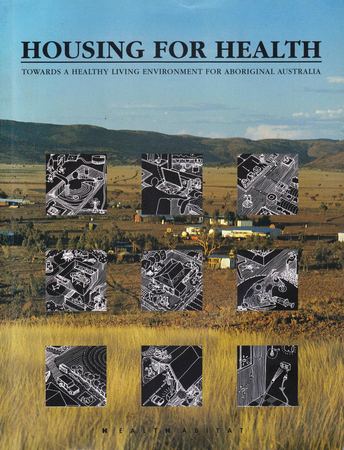Housing for Health + 20 years
It has been 20 years since HH published Housing for Health
– interesting to reflect on what has changed and what remains the same.
Following the work commenced in the UPK review in 1985, the work that was recorded in Housing for Health was to see if the principles first proposed in UPK were effective.
The work was completed in one small community in the north west of South Australia. This involved ensuring the 12 houses present in the community functioned for a year (1991/2) . The housing ‘research’ money was used for maintenance and local staff and not report writing. Housing for Health, the book, was published in 1993.

The book was controversial and criticised by many. The small budget ($40,000), small number of houses (12) and even the linking of housing and health ( perceived to diminish the importance of both) were cited as problems.
The ‘romantics’ attacked the ‘western imperialist’ nature of the solution and remained convinced that the restoration of nomadism was the only pathway to health and happiness. CLICK HERE to read the Sydney Morning Herald letters published days after the release of Housing for Health.
But perhaps the main offence of Housing for Health was to show that the so called ’problems’ of Indigenous housing and, to some extent health, had achievable and affordable solutions. The solution required careful targeting of limited resources and the involvement of local community members at every level of the project.
Within a year of the publication, ATSIC (The Aboriginal and Torres Strait Islander Commission – now defunct) commenced the $40m Health Infrastructure Priority Program (HIPP). This transformed into the 10 year duration (1996-2006) National Aboriginal Health Strategy (NAHS) of which $900m was spent on housing with a ‘health focus’. Most recently, the National Partnership Agreement on Remote Indigenous Housing (NPARIH) proposed a 10 year $5.5bn program (2008-2018) but unofficially was stopped around 2013 after a rumoured $2.2bn had been spent.
Much money has been managed by the big engineering companies to build Indigenous housing and infrastructure, lip service has occasionally been paid to the aims and methods of Housing for Health. But, 20 years on, where are the evaluation reports on the improved function of the housing and infrastructure designed and built and where is the evidence of improvements in health as outlined in the original Housing for Health?









